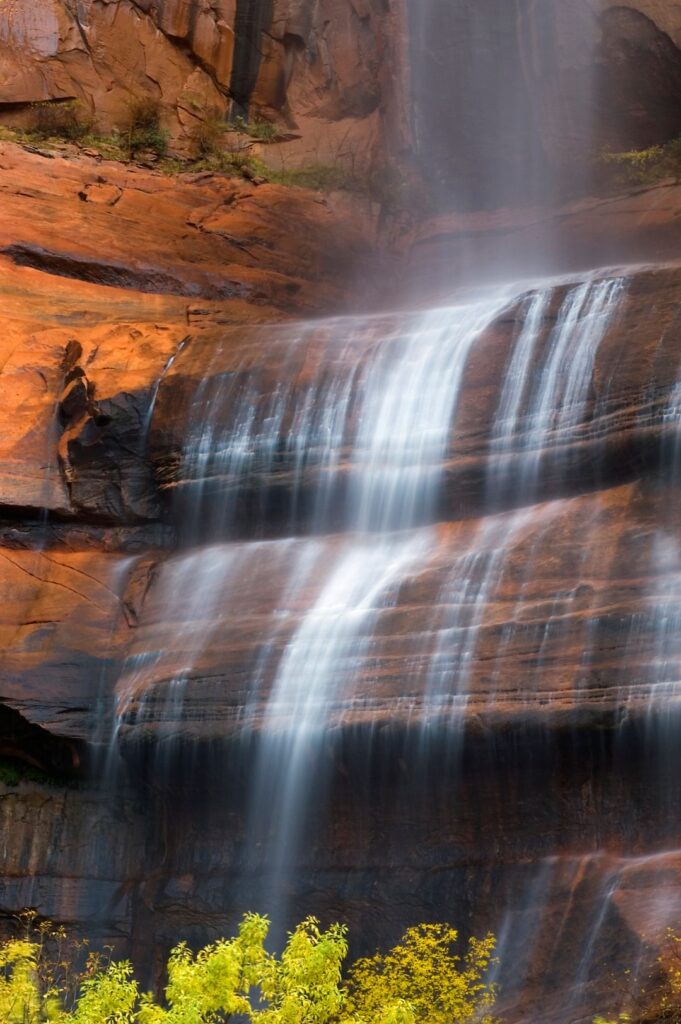Planning a trip to Zion National Park? This comprehensive guide covers everything you need—camping, hotels, and unforgettable hiking trails. Whether you’re a first-time visitor or a seasoned explorer, Zion offers breathtaking views, diverse terrain, and convenient lodging options. From scenic campgrounds to cozy hotels near the park entrance, we’ll help you choose the best stay. Additionally, you’ll discover top-rated hikes like Angels Landing and The Narrows. Because Zion National Park attracts millions each year, it’s essential to plan ahead. So, let’s dive into the details and make your Zion adventure smooth, scenic, and unforgettable.
One of the most jaw-dropping places in the country’s national park system, Zion is off the beaten track in southwest Utah but well worth the trip. The gorgeous canyon, surrounded by colorful sandstone cliffs, is a sight to behold. Rivers and streams create waterfalls and provide habitat for fascinating wildlife and plants. Visitors check out the grandeur on scenic drives, hiking trails, bike and horse paths, and river trips. Some people camp or backpack, while others take part in more strenuous activities like rock climbing.
Zion National Park Camping and Hotels
Zion National Park offers a wide range of lodging options, from rustic campgrounds to upscale hotels. Planning ahead is essential. It is necessary to make lodging reservations. The most iconic choice is the Zion Lodge and cabins, which date to the 1920s. The hotel is inside the canyon, near popular trails. Rooms are booked at least six months in advance.

Springdale, just outside the park entrance, features hotels, bed-and-breakfasts, and vacation rentals. Watchman Villas offers luxury condominiums one mile from Zion National Park. Budget travelers can find affordable motels in Saint George and Cedar City, both within driving distance.
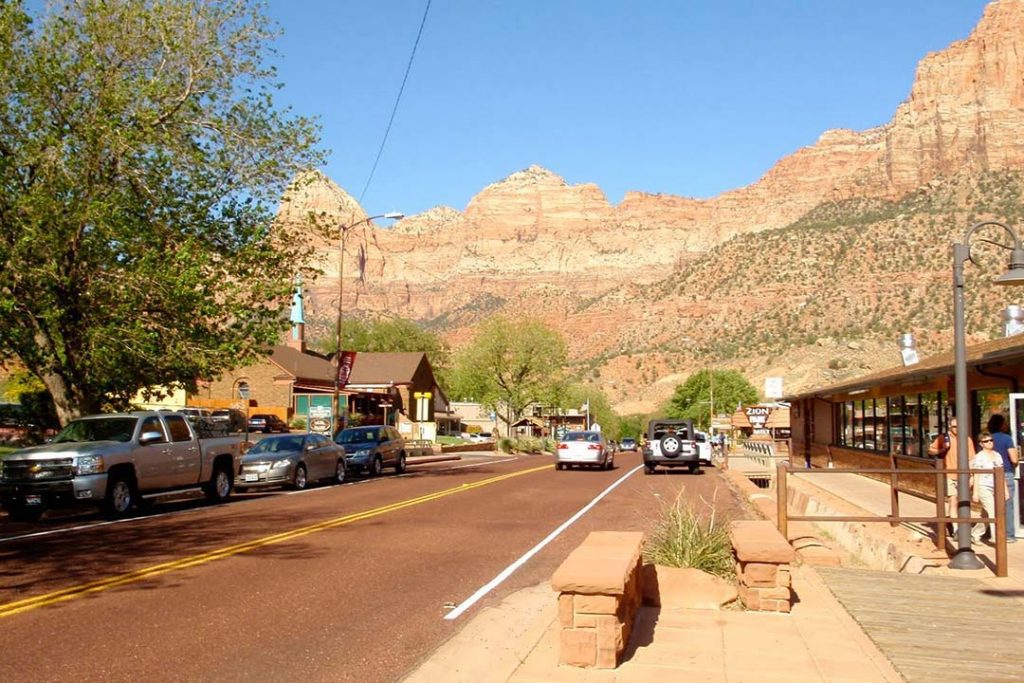
Zion Ponderosa Ranch Resort, near the east entrance, includes cabins, RV sites, and tent camping. Guests enjoy horseback riding, ziplining, and canyoneering. Cliffrose Lodge, located on the Virgin River, offers suites, hot tubs, and private beach access. Red Rock Inn in Springdale provides cozy cottages at lower rates. The Red Rock Inn Bed and Breakfast Cottages in Springdale are less expensive.
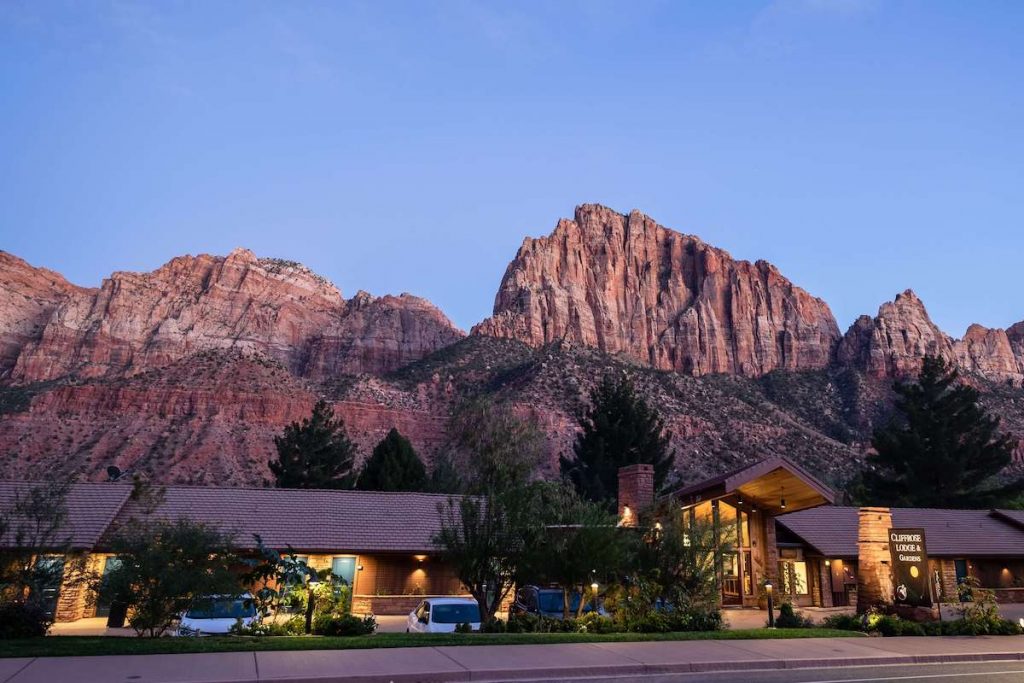
Inside Zion National Park, three campgrounds—South, Watchman, and Lava Point—serve visitors from spring through fall. Sites include drinking water, flush toilets, and trash containers. Pets are allowed on leashes. However, showers and electrical hookups are not available. Reservations are recommended.
Private campgrounds outside the park offer more amenities, including Wi-Fi and laundry facilities. These sites are ideal for RV travelers and families seeking comfort. Booking early ensures availability during peak seasons.
Whether you prefer camping under the stars or relaxing in a lodge, Zion National Park has options for every traveler.
Getting Around Zion National Park
Getting around Zion National Park is simple, thanks to its well-organized shuttle system and accessible roadways. From March through late November, the Zion Canyon Shuttle operates daily and is the primary way to explore the main canyon. Private vehicles are not allowed on Zion Canyon Scenic Drive during this period.
The shuttle stops at key trailheads and scenic viewpoints, including Angels Landing, The Grotto, and Zion Lodge. Riders can hop on and off freely, making it easy to plan hikes and sightseeing. The shuttle is free and runs frequently, reducing wait times even during busy seasons.
Springdale also offers a town shuttle that connects hotels and restaurants to the park entrance. This service helps reduce traffic and parking congestion. Visitors can park in Springdale and walk or ride to the Zion National Park Visitor Center.
For those visiting in winter, private vehicles are allowed throughout the park. However, some roads may close due to snow or ice. Always check current conditions before driving.
Cycling is another great way to explore Zion National Park. Bicycles are allowed on all park roads and the Pa’rus Trail. Cyclists must yield to shuttles and follow traffic rules.
With multiple transportation options, navigating Zion National Park is both convenient and environmentally friendly.
Top Things to See in Zion National Park
Zion National Park is home to some of the most iconic landscapes in the American Southwest. Visitors can explore towering cliffs, narrow canyons, and lush riverbanks. The park’s natural beauty draws millions each year, offering unforgettable sights for hikers, photographers, and nature lovers alike.
Angels Landing is one of the most famous hikes in Zion National Park. This strenuous trail rewards hikers with panoramic views of Zion Canyon. Due to its steep drop-offs, a permit is required. Early reservations are recommended.
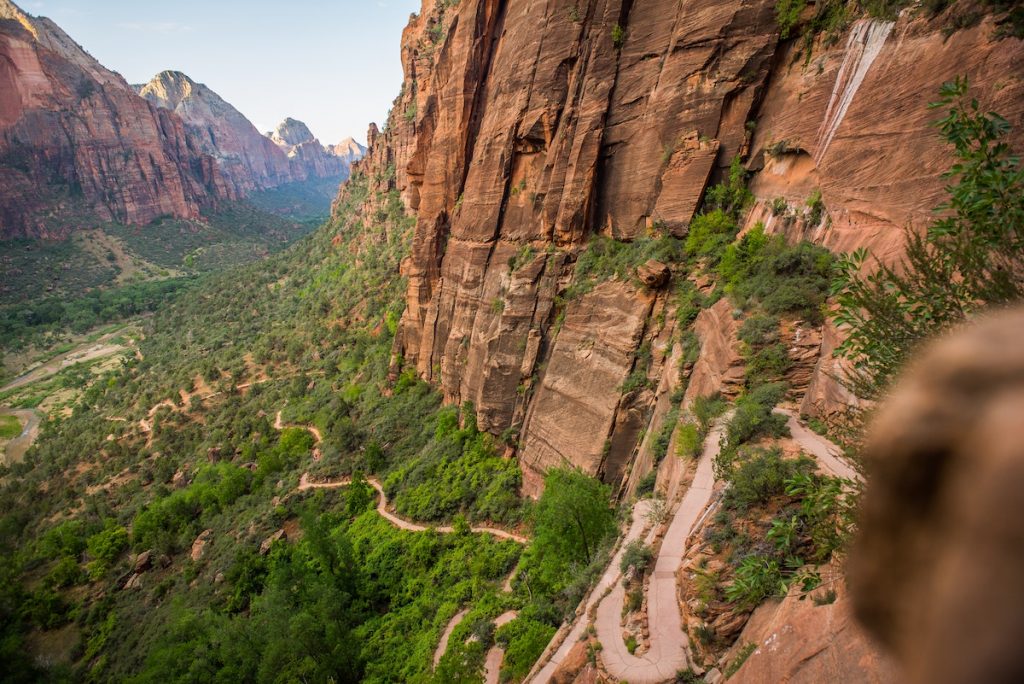
The Narrows offers a unique experience—hiking through the Virgin River between towering canyon walls. Water levels vary, so check conditions before entering. Proper footwear and walking sticks are essential for safety and comfort.
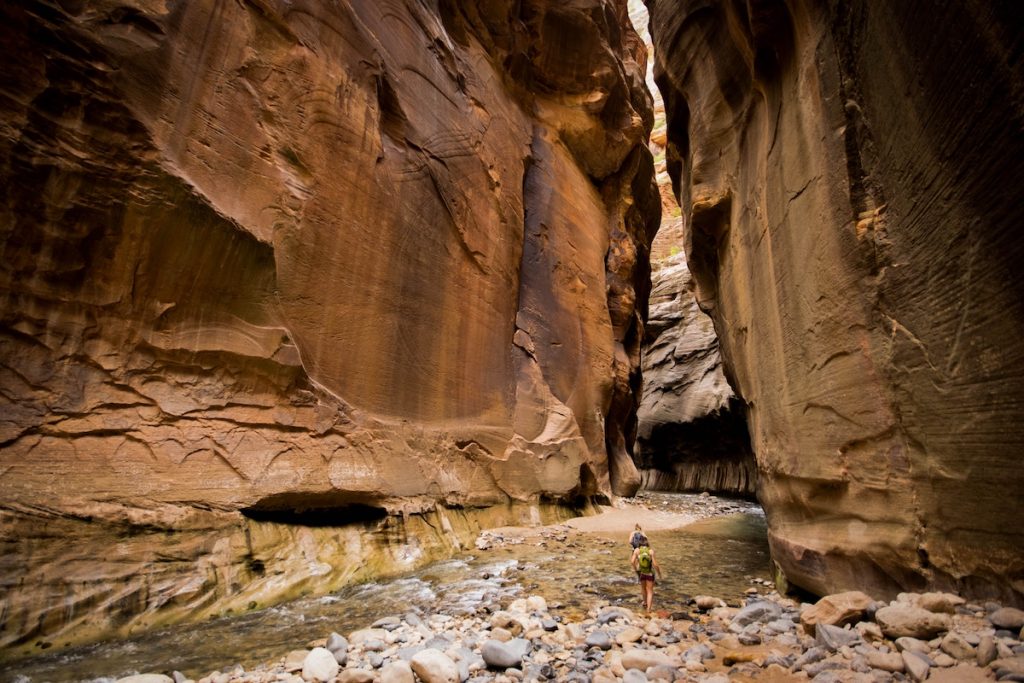
Emerald Pools features a series of waterfalls and tranquil pools. The trail system includes lower, middle, and upper routes, each offering different perspectives. It’s a great option for families and casual hikers.
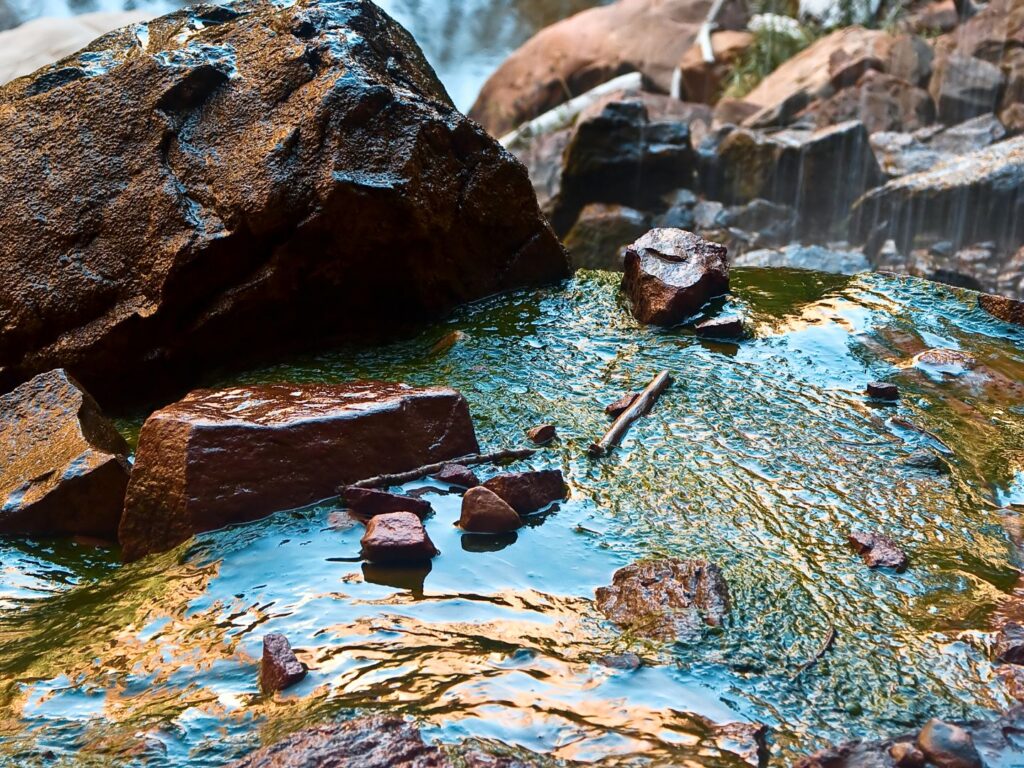
Kenneth Keifer | Dreamstime.com
Canyon Overlook Trail provides a short but scenic hike with sweeping views of Zion National Park. It’s ideal for sunrise or sunset photography. The trailhead is located near the Zion-Mount Carmel Tunnel.
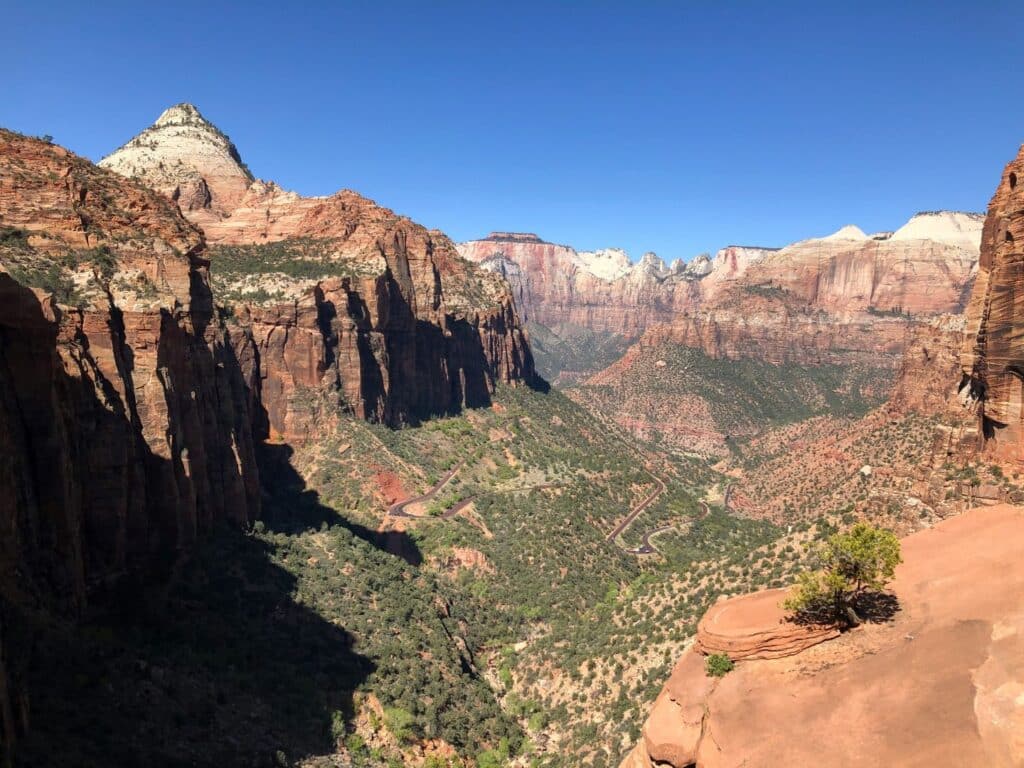
Another verdant area is Weeping Rock, where water seeps from an alcove to create waterfalls and hanging gardens. The easy, half-mile walk is one of the park’s two most popular trails.
Zion National Park Hiking Trails
Zion National Park is a paradise for hikers, offering some of the most scenic and diverse terrain in the Southwest. From towering cliffs to narrow canyons, the park’s natural beauty is best explored on foot.
Among the most iconic Zion hiking trails is Angels Landing. This strenuous 5.4-mile round trip climbs 1,500 feet and ends with panoramic canyon views. Due to its steep drop-offs, a permit is required. Early reservations are strongly recommended.
The Narrows is another unforgettable experience. Hikers wade through the Virgin River between thousand-foot canyon walls. The Riverside Walk offers a paved, one-mile path to the river’s edge. For a full Narrows hike, check water levels and rent proper gear.
Emerald Pools features three trails—Lower, Middle, and Upper—each leading to waterfalls and tranquil pools. These short hikes are ideal for families and casual visitors. The trails begin near Zion Lodge and offer shaded areas and scenic views.
Canyon Overlook Trail is a one-mile round trip with dramatic views of Zion Canyon. It’s accessible and perfect for sunrise or sunset photography. The trailhead is near the Zion-Mount Carmel Tunnel.
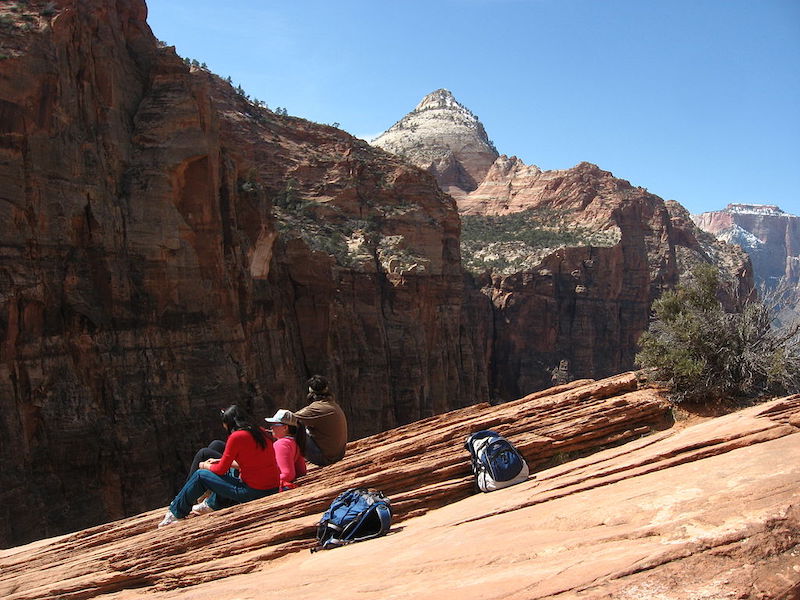
Other notable zion hiking trails include Weeping Rock, Observation Point, and Kolob Canyons. Each offers unique perspectives of the park’s stunning geology and ecosystems.
Whether you’re a beginner or an experienced trekker, Zion hiking trails provide unforgettable adventures through one of America’s most breathtaking landscapes.
Horseback Riders, Backpackers & Bicycles
Zion National Park offers unique experiences for horseback riders and backpackers seeking solitude and adventure. These visitors explore areas beyond the main canyon trails.
Guided horseback tours are available from spring through fall. Riders follow designated paths like the Sandbench Trail, which climbs 500 feet to a scenic overlook. Tours vary in length and difficulty.
Horseback riding provides access to remote areas with cactus gardens, rock monoliths, and river views. Riders must follow park regulations and stay on approved trails. Horses are not allowed in wilderness zones or on narrow hiking paths.
Backpackers enjoy over 90 miles of trails and dozens of backcountry campsites. Zion National Park’s wilderness areas span more than 124,000 acres. Permits are required for overnight trips and must be reserved in advance.
Popular backpacking routes include the West Rim Trail, La Verkin Creek, and Kolob Canyons. These trails offer dramatic views, quiet campsites, and diverse terrain. Water sources are limited, so plan carefully.
Backcountry travel requires preparation. Visitors must carry maps, water filters, and emergency supplies. Cell service is unreliable in remote areas. Always check trail conditions and weather forecasts before departing.
Zion National Park rewards horseback riders and backpackers with unforgettable scenery and peaceful escapes from crowded areas. It’s a perfect way to experience the park’s wild side.
Bicycles are permitted on all park roads and the Pa’rus Trail. Like hikers, bicyclists enjoy opportunities to get up close and personal with nature. Zion is a destination for birdwatchers because of the 291 avian species, including rare birds like the California condor and Mexican spotted owl. There are also ravens, peregrine falcons, and hummingbirds.
Canyoneering
Few places on Earth are better for canyoneering. This activity involves hiking, swimming, and sometimes rappelling. Zion teems with dozens of canyons, from narrow slots to wider chasms, that provide wonders around every turn. The Narrows, The Subway, and Orderville Canyon are the most-visited locations.

Some of the park’s stone monoliths are ideal for climbing. The 2,000-foot sandstone cliffs are famous among enthusiasts of the sport. This is an adventure reserved for experts. Others might want to try bouldering at one of two accessible sites in the main canyon.
River trips with various types of watercraft, including kayaks, are possible when rivers are high enough. Excursions range from a few hours to several days.
Informational Activities
Rangers lead activities from mid-April to mid-October that focus on animals, plants, geology, and human history. There are walks, talks, and evening campground programs.
Activities and educational programs for children take place every day from Memorial Day to Labor Day at the Zion Nature Center. A short kids’ hike happens regularly at the Zion Human History Museum. Zion Lodge programs feature nature games, music, and storytelling.
For adventurous tourists, Zion offers many things to do. Reservations are either required or recommended for some activities. Wilderness permits for overnight backpacking trips are available at visitor centers, but it is a good idea to sign up online as long as three months ahead of time. Reservations and permits are needed for technical canyoneering trips, overnight rock-climbing bivouacs, and river trips. Visitors also need to be prepared to pay for recreational use passes to enter the park. There are seven-day, annual, and lifetime passes. Children younger than 15 are admitted free of charge.


